Domino Stacking Tool
by Always Tinkering in Workshop > 3D Printing
1961 Views, 6 Favorites, 0 Comments
Domino Stacking Tool

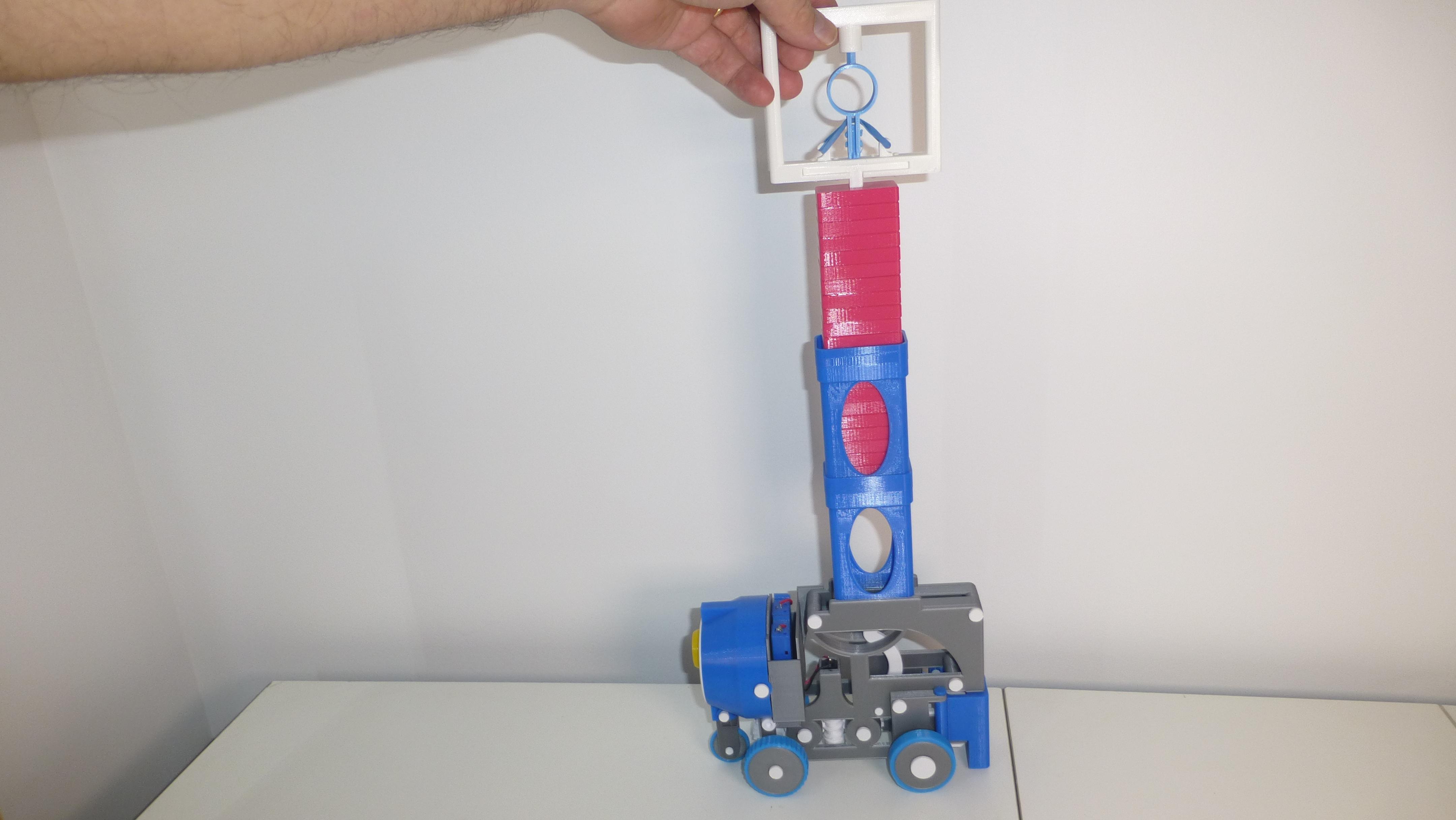
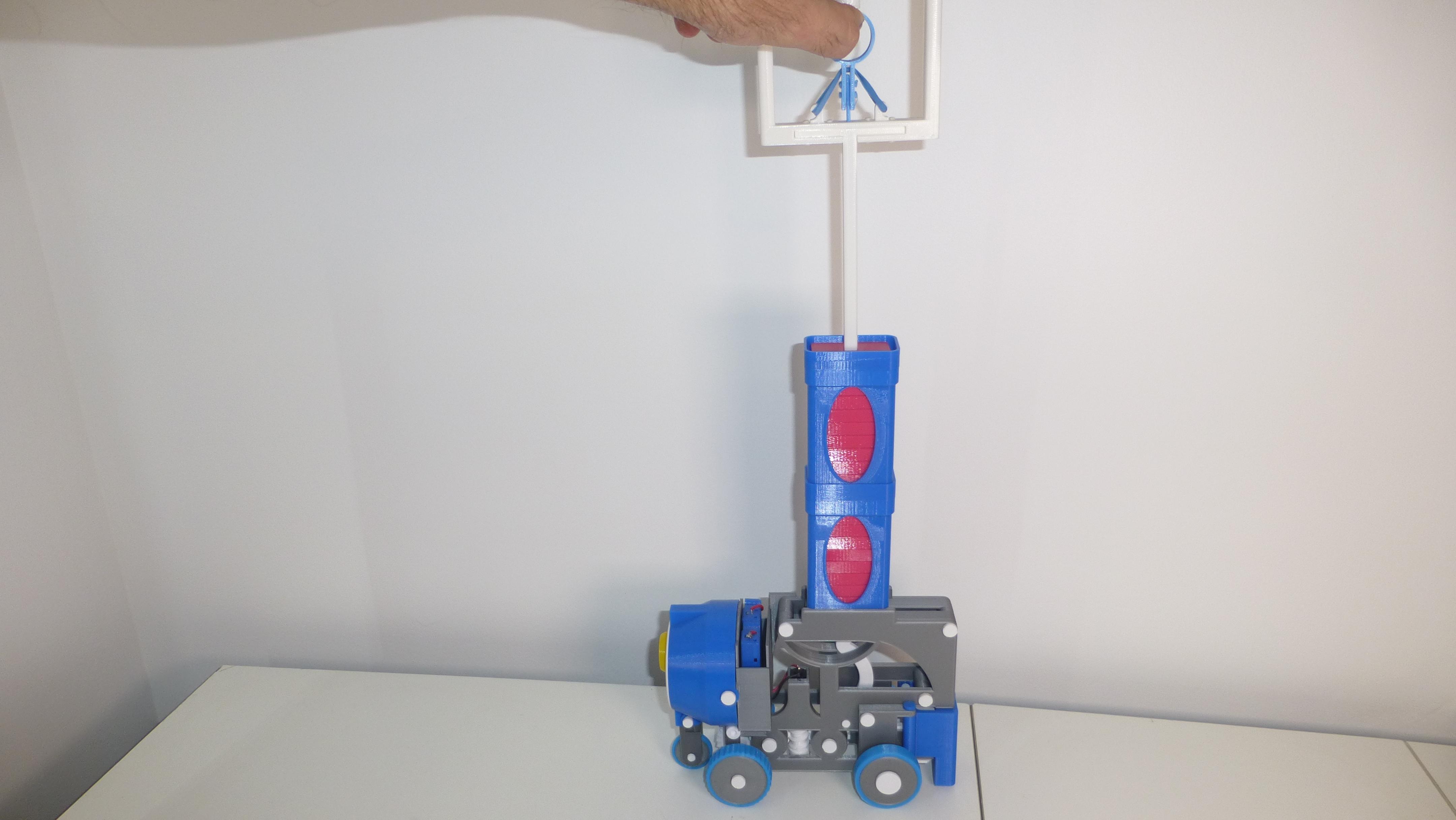
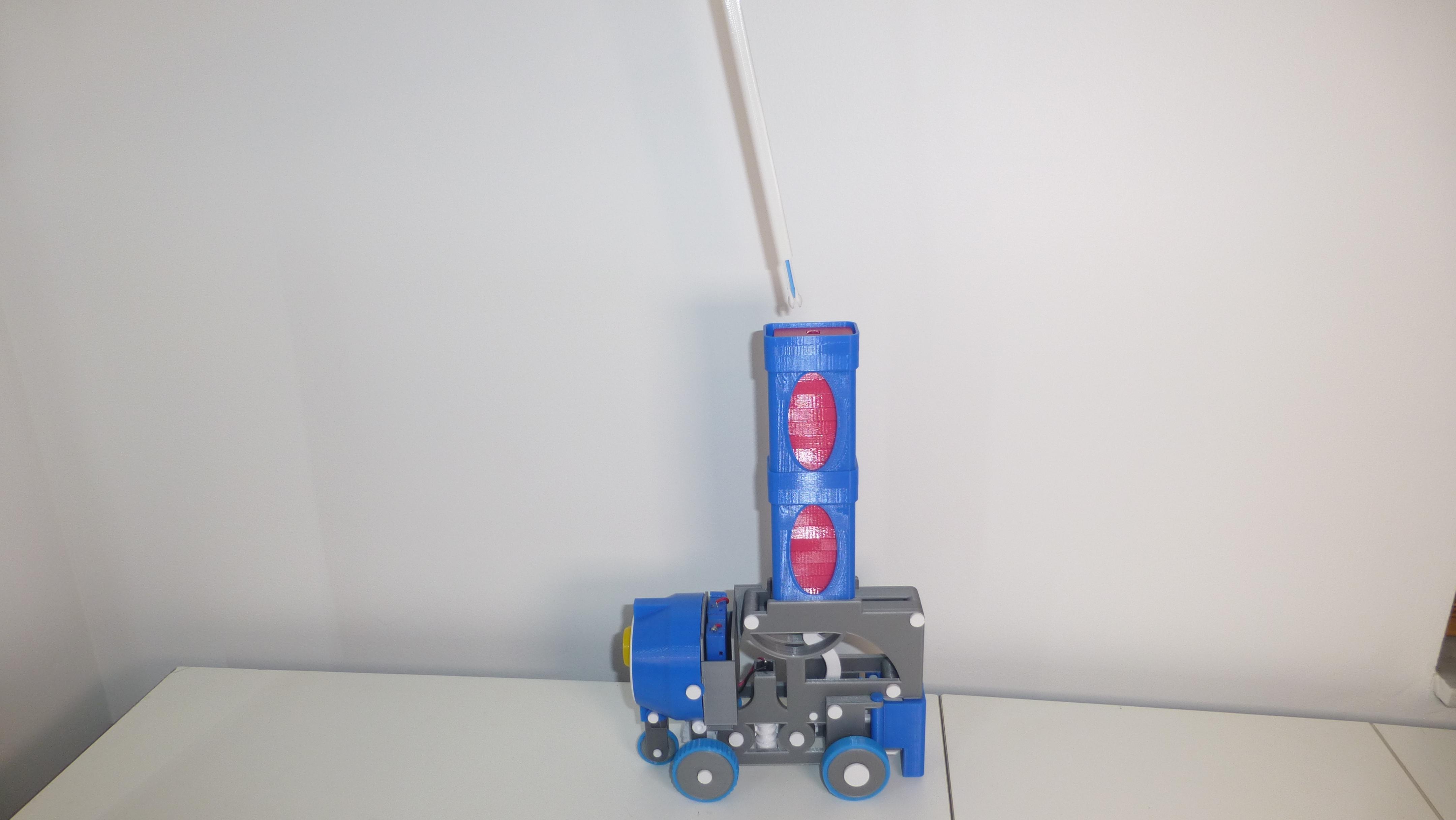
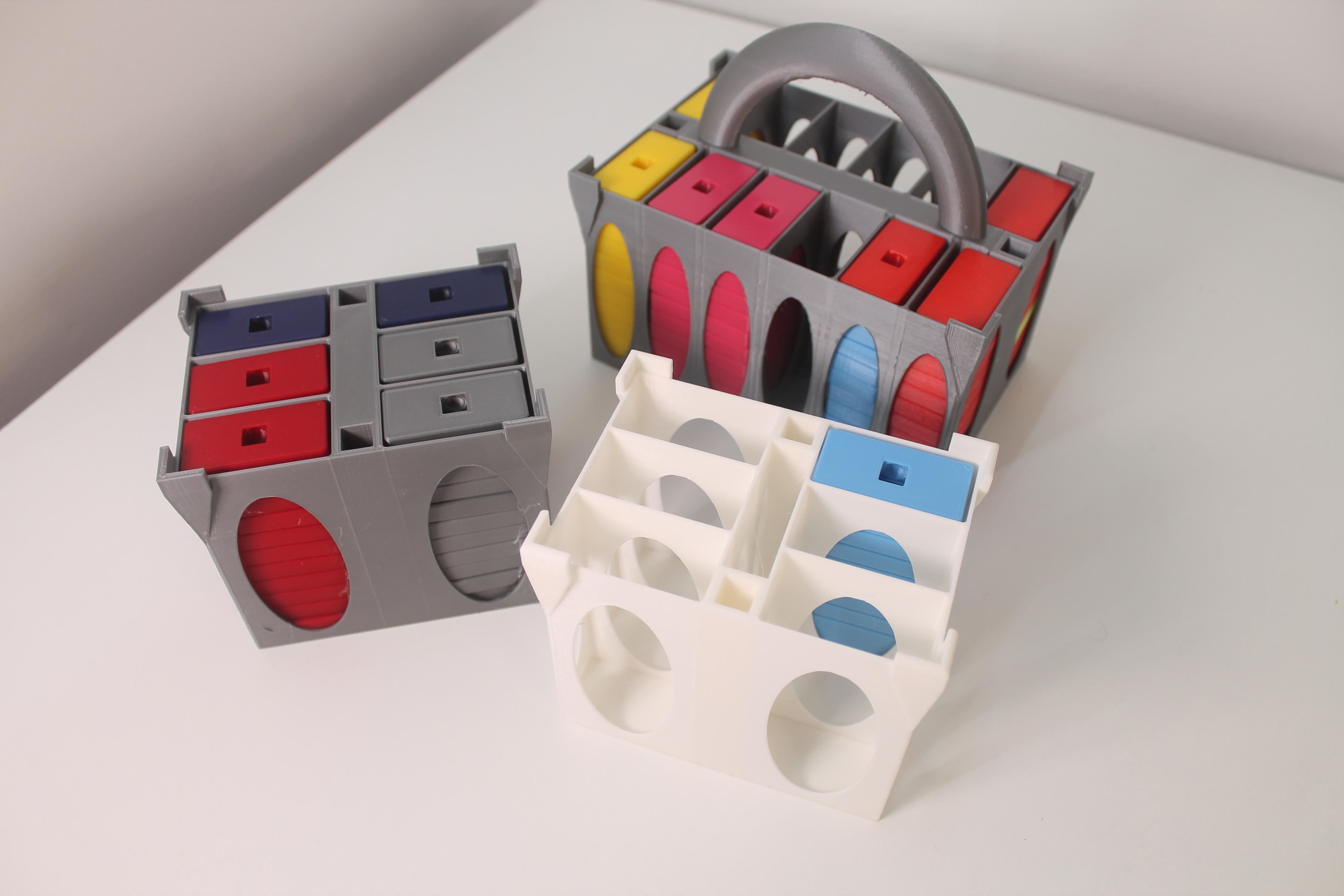
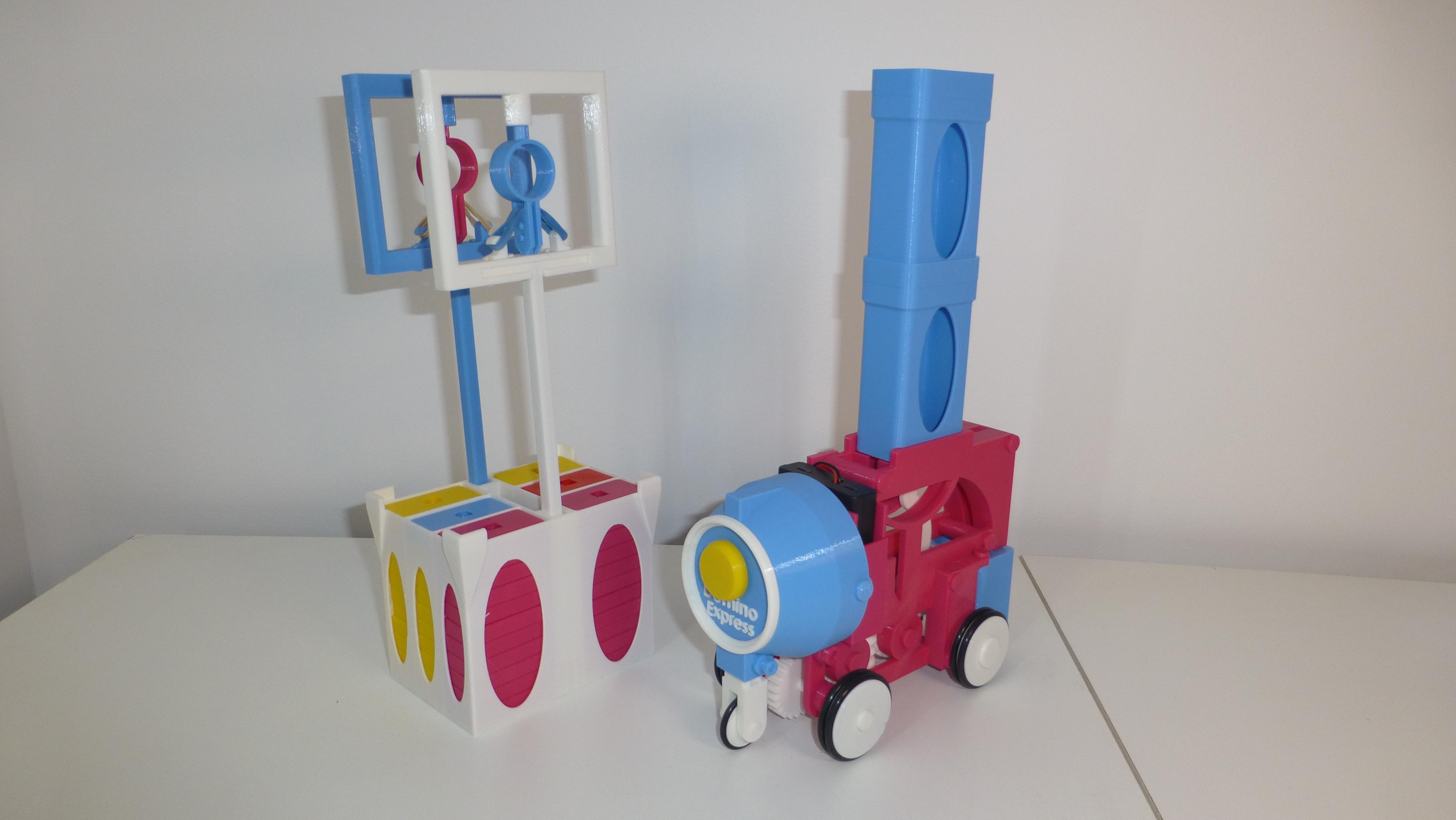

This is a domino pickup tool. The dominos are a printed REMIX of the domino from the Pink and Green Domino Machine II By gzumwalt. This brings me to the purpose of having a domino stacking tool... it is also a LOADER for the Domino Machine II. All of the parts are new except for the Domino. That is Greg's design with a hole poked in it.
For anyone who has made the Domino Machine II, you can use this too, but you will need to re-print your dominos with the pickup hole.
The initial object was just the tool to stack and load, but I found that you can use it to keep loading the train as it moves. To facilitate that I have also designed some stackable storage trays to facilitate loading. If you do try the re-load while moving, I recommend you load 11 at a time if you have a 22 position stack.
The storage trays come in 3 varieties:
- 66 Stackable Domino Trays with no handle
- 132 Domino Trays with no handle
- 132 Domino Trays with a handle
As you decide what to print... the stacking tool holds up to 22 dominos. You can print a storage tray for 66 dominos or you could print 3 stacking tools and you use them to store the dominos as well.
To Operate the stacking tool:
- Pull up on the button to insert the tool into a domino.
- Release the button to secure the dominos on to the tool while attempting to land the rounded head in the center. It is quite easy as the tool will be perfectly aligned when it hits the surface below the last domino.
Supplies
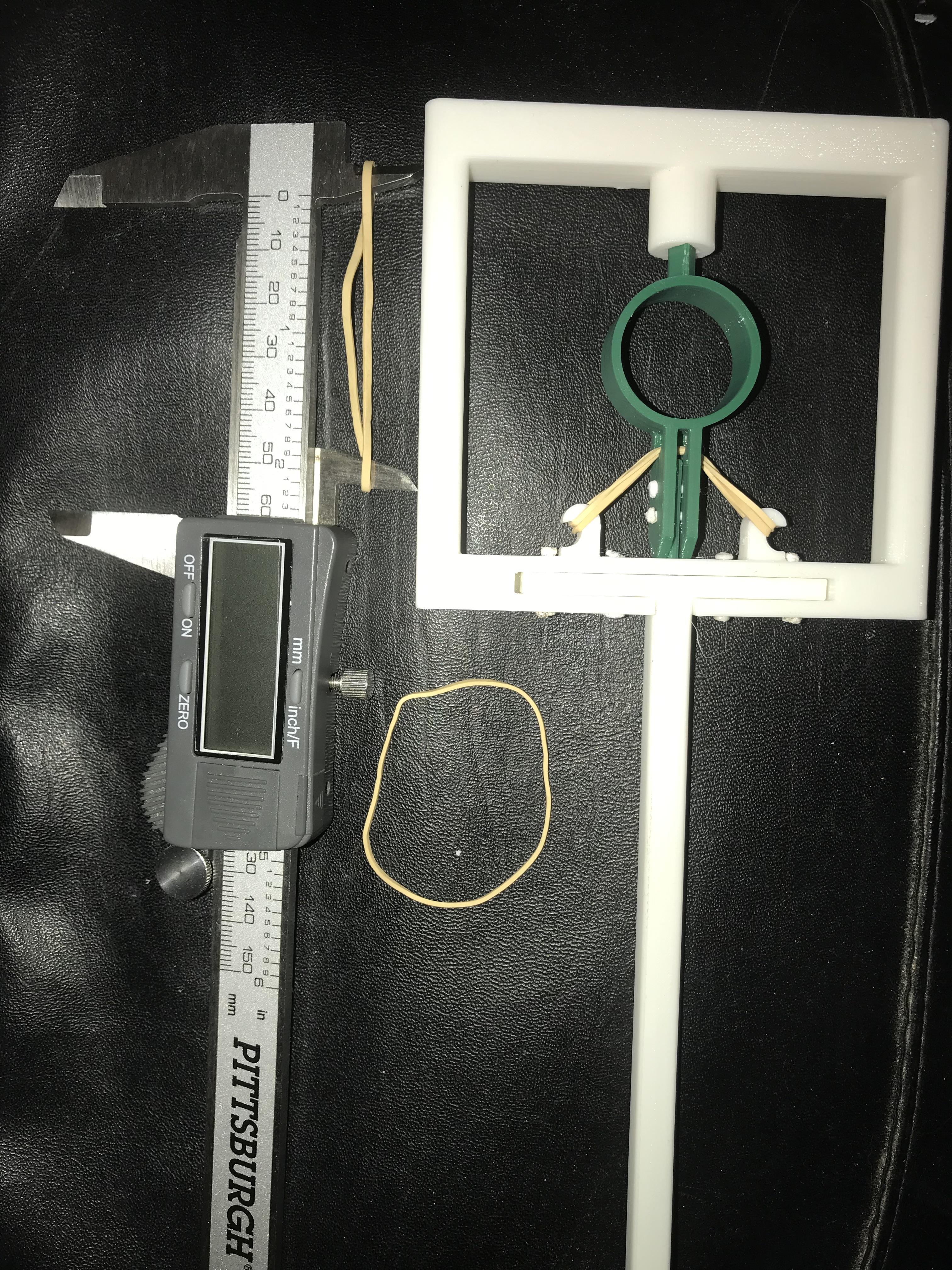
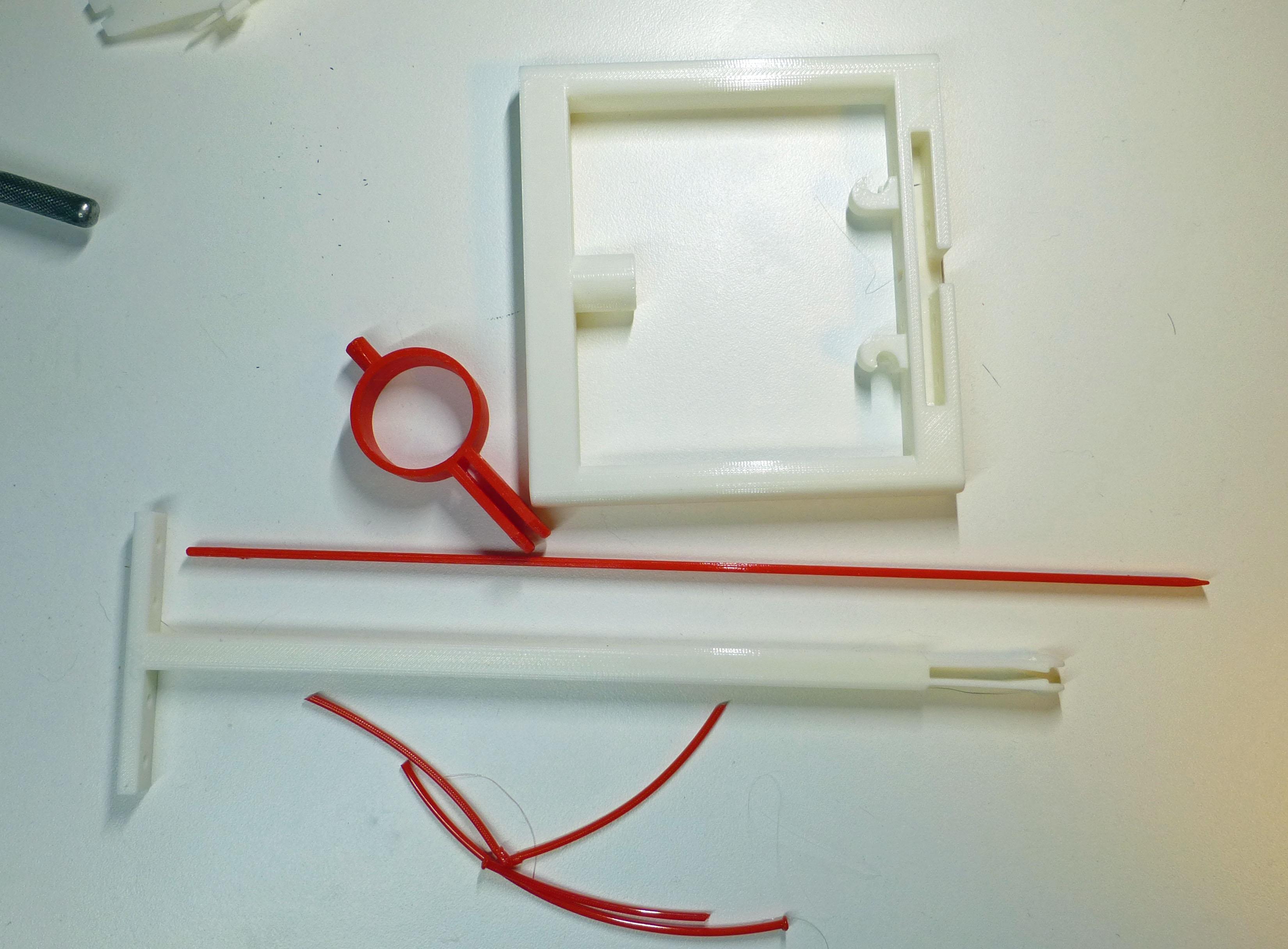
Non-Printed Parts
- A rubberband or some elastic. You want the rubberband or elastic to have moderate pressure at rest. You will see I folded over a rubberband to get a good fit, so you have that option. In the photo I show one that is about 60mm.
- A small piece of string. I used dental floss, to feed the rubberband through the hole.
- About a hands width of 1.75mm filament
- A soldering iron or wood burner to melt the end on the filament to make a filament rivet
Printed Parts
- The 4 Printed parts in the illustration
- Print these parts with SUPPORT FROM BUILD PLATE for best results.
- Handle
- Shaft
- Simple_Plate
- The pushrod should not need supports. If your surface does not bond well consider a brim.
- You are going to want to print at least one domino for testing.
- Domino's print with no support.
- I use an alternating diagonal fill. I think it reduces the bounce on hard surfaces but who knows?
- Always inspect your finished dominos that the holes are clean of any oozed plastic inside or on the edges.
- OPTIONAL PRINT: Storage Carriers are printed with NO supports. Be sure to inspect your slicing to make sure the slice for your printer agrees.
Downloads
Assemble the Shaft Into the Handle
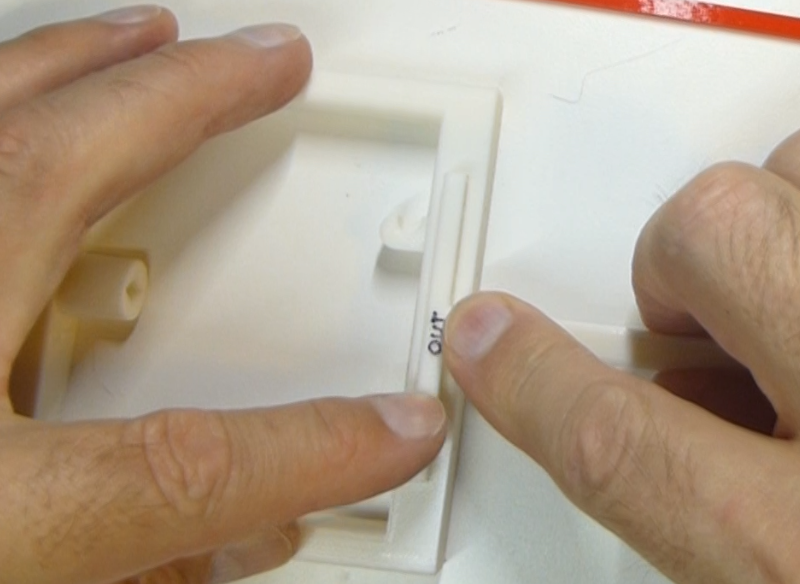
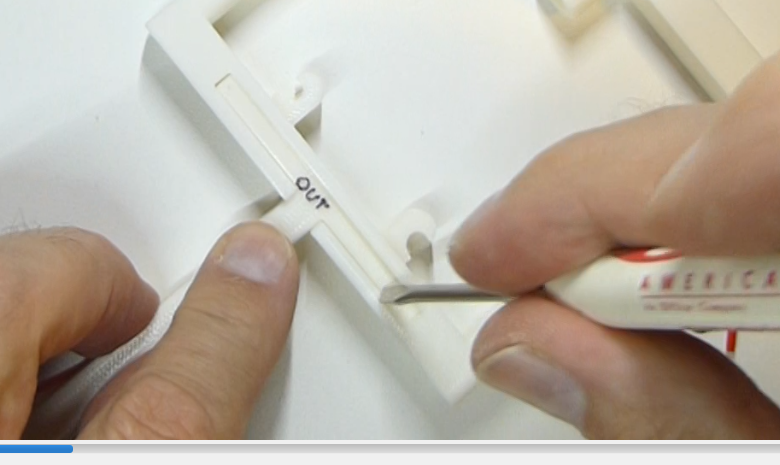
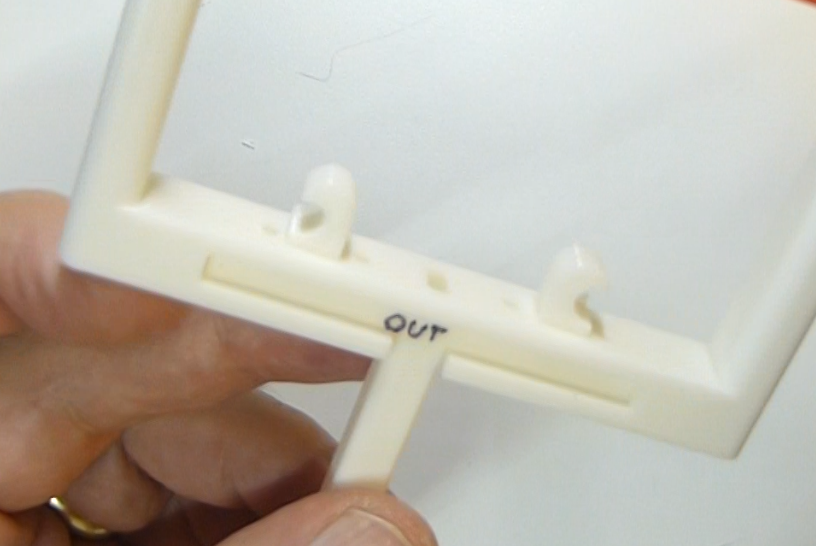
Locate the word OUT printed at the top of the T for Domino-pickupTool_285mm_pickup_shaft.stl. Insert it into the Domino-pickupTool_simple-handle.stl slot with the word OUT facing out. This should be a VERY snug fit. Once you push it in, take a small screw driver and push the SHAFT all the way into the handle. If it absolutely will not fit, sand some of the top of the T down until it does.
If you accidently insert it upside down and you cannot get it out, you may have to drill the rivet holes out a little. Also make sure the pushrod does not bind where it exists the T into the handle. I enlarged that hole to give it lots of clearance.
Rivet the Shaft to the Handle
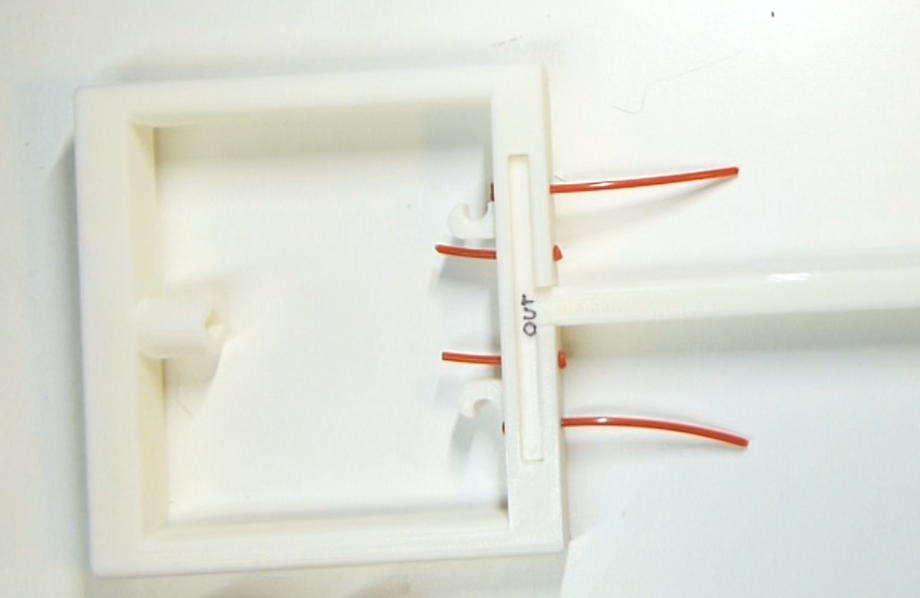
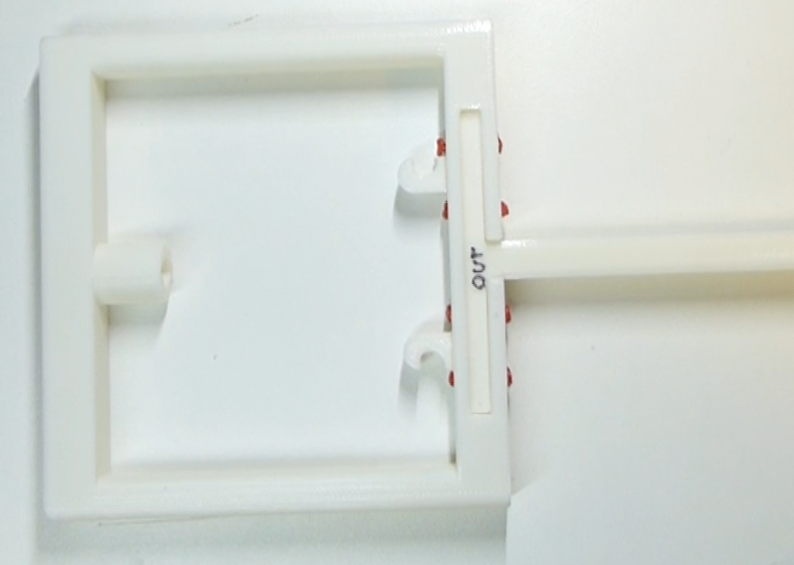
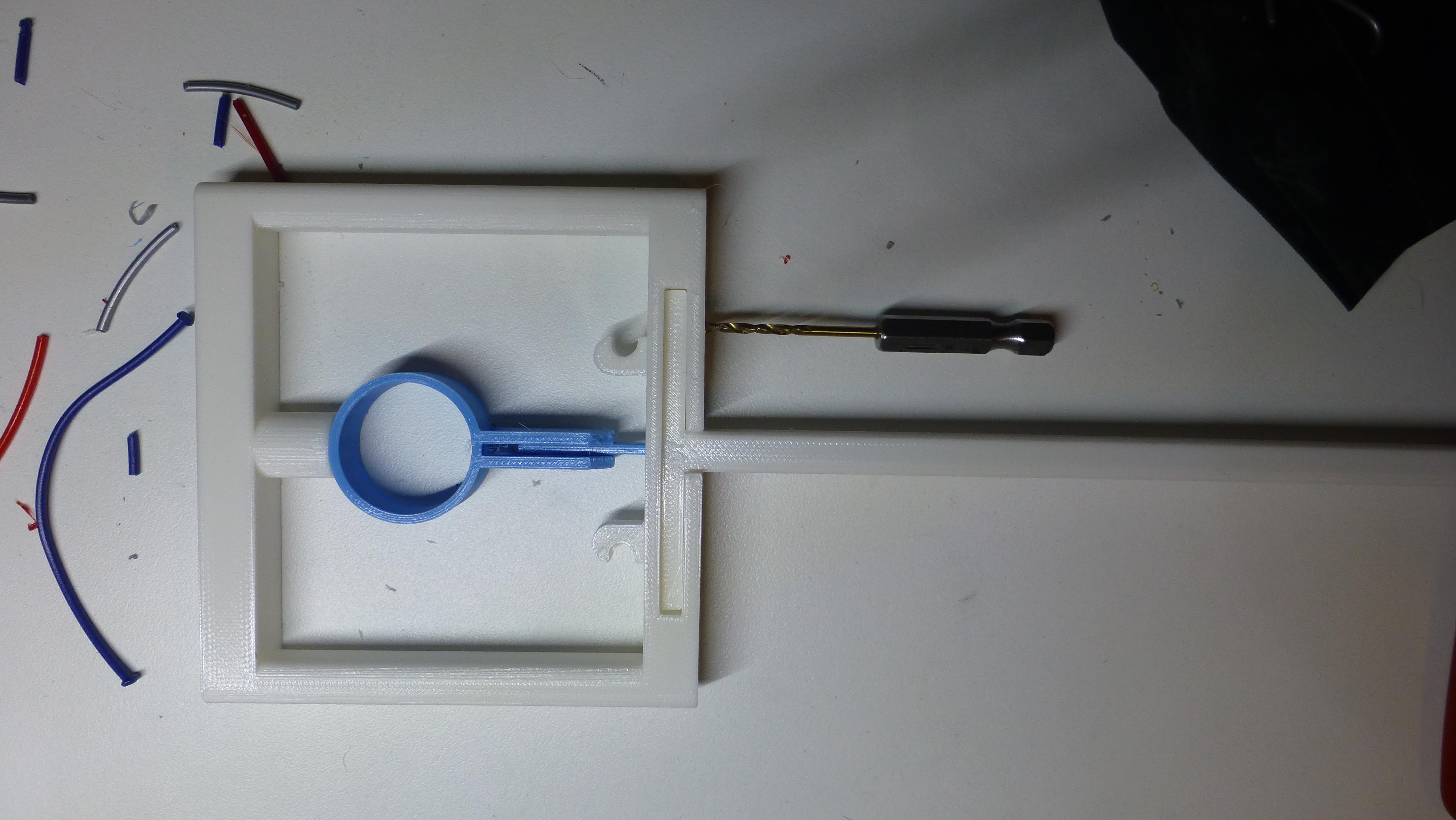
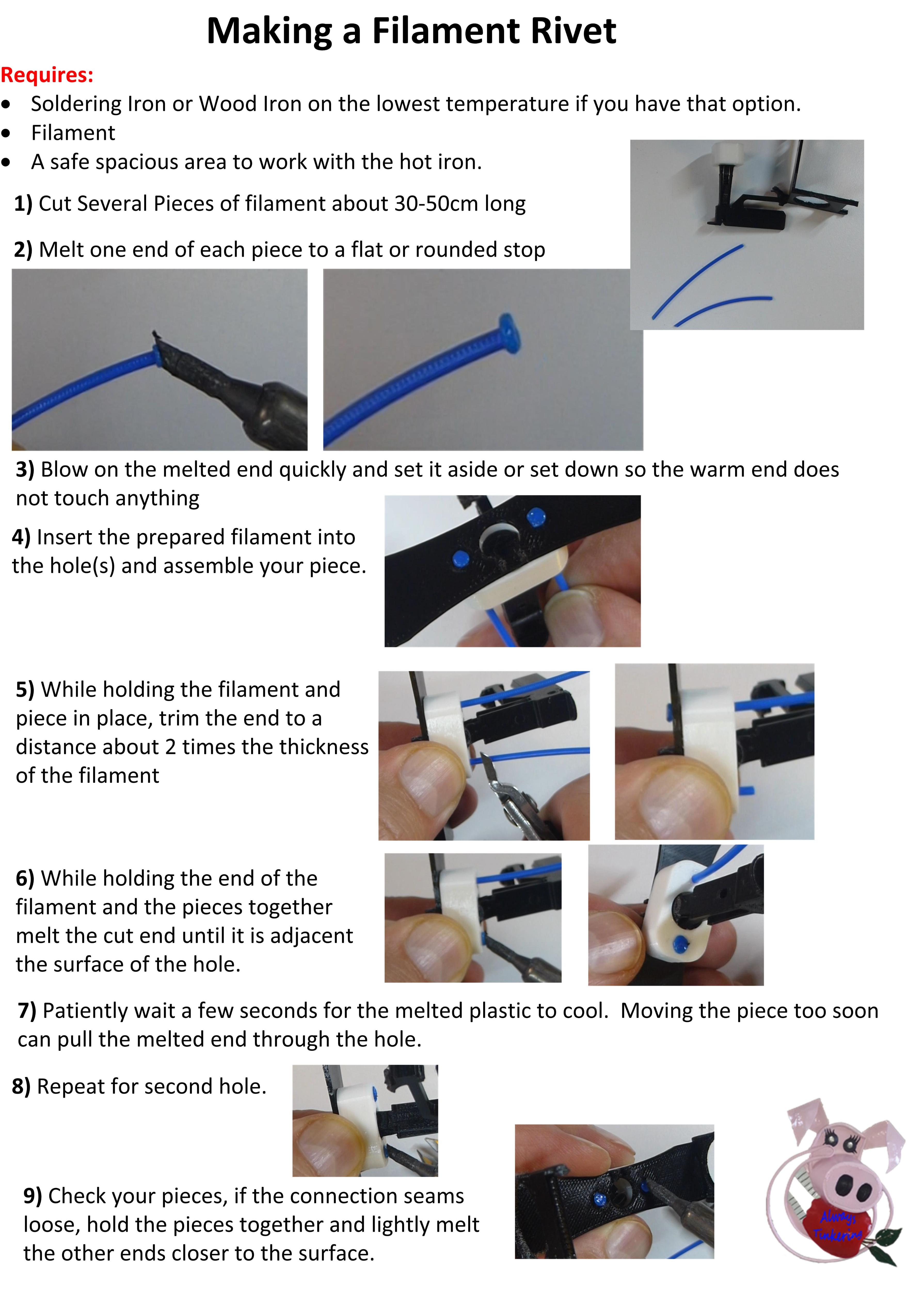
INSPECT your print. The ball at the end of the fingers should be well formed.
Install the Rivets to attach the handle to the shaft. Don't worry about any load. These are just to keep the shaft from slipping out. Follow the procedure for fashioning a rivet and securing it in place.
If any of the holes are close but too tight, by hand you can turn a small drill to loosen the hole. I use a 5/64th which is about 2mm.
Insert the Pull and Pushrod
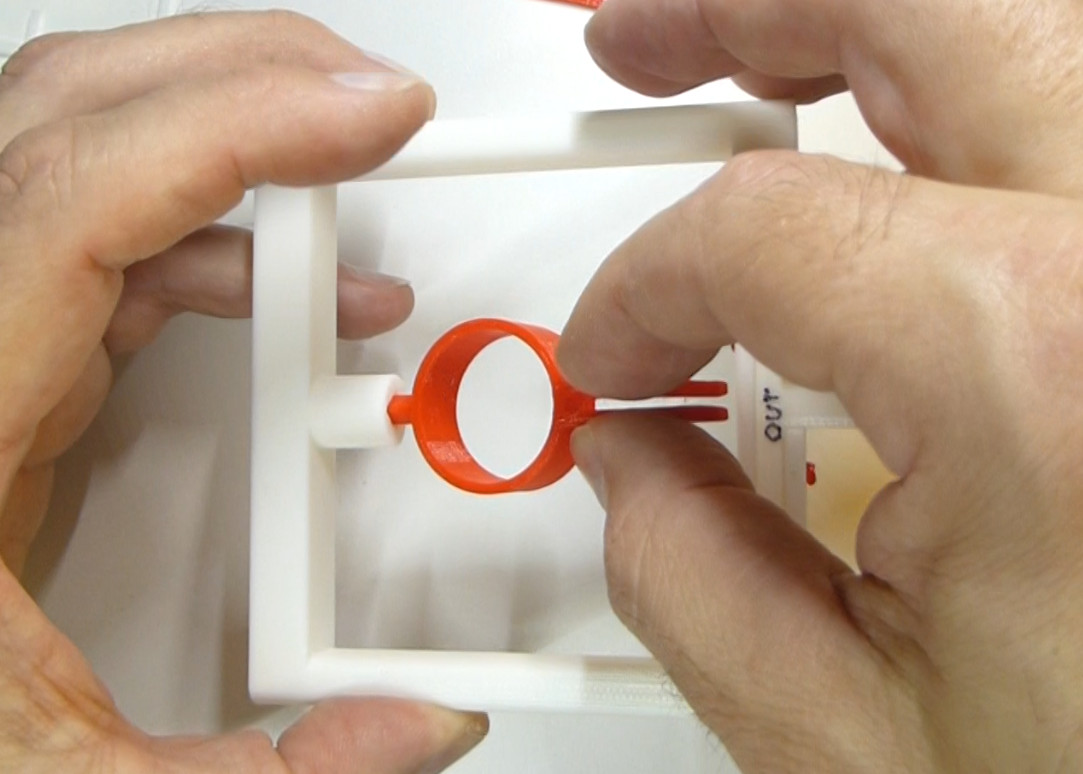
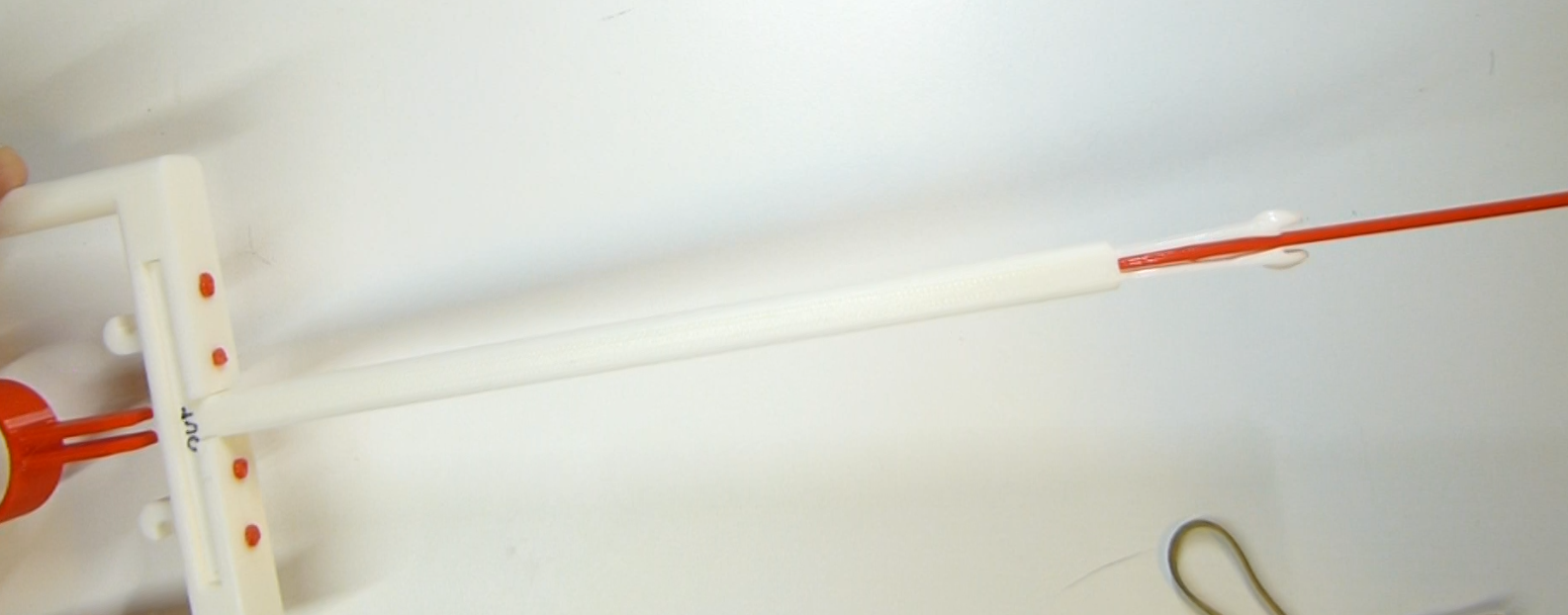
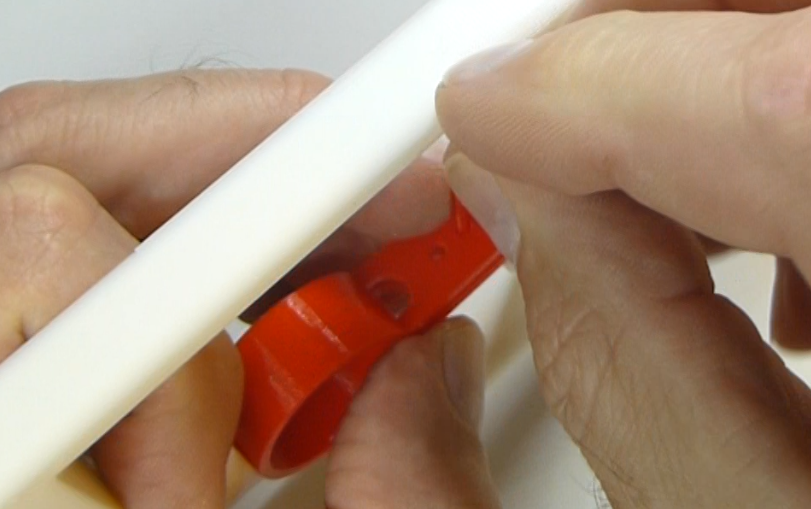
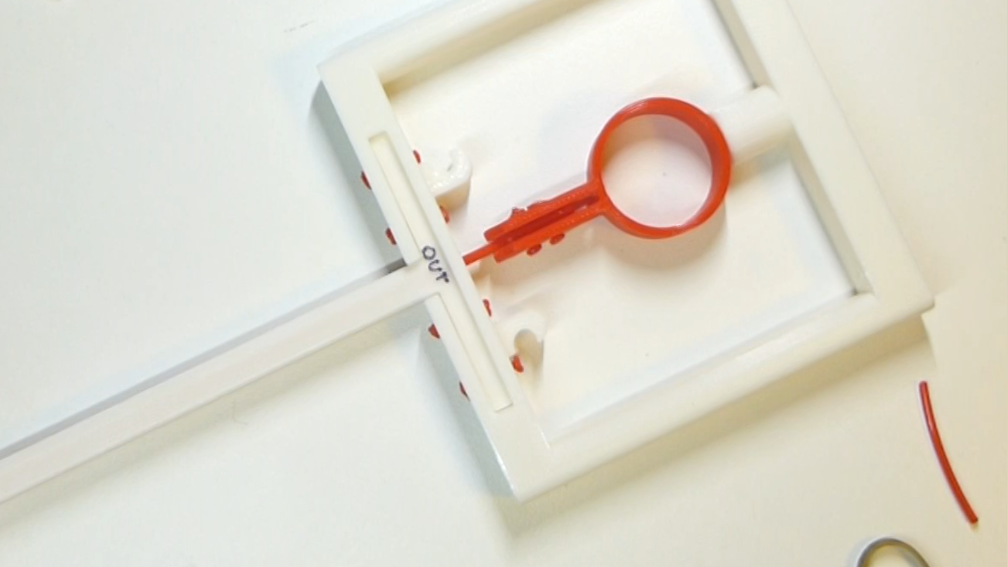
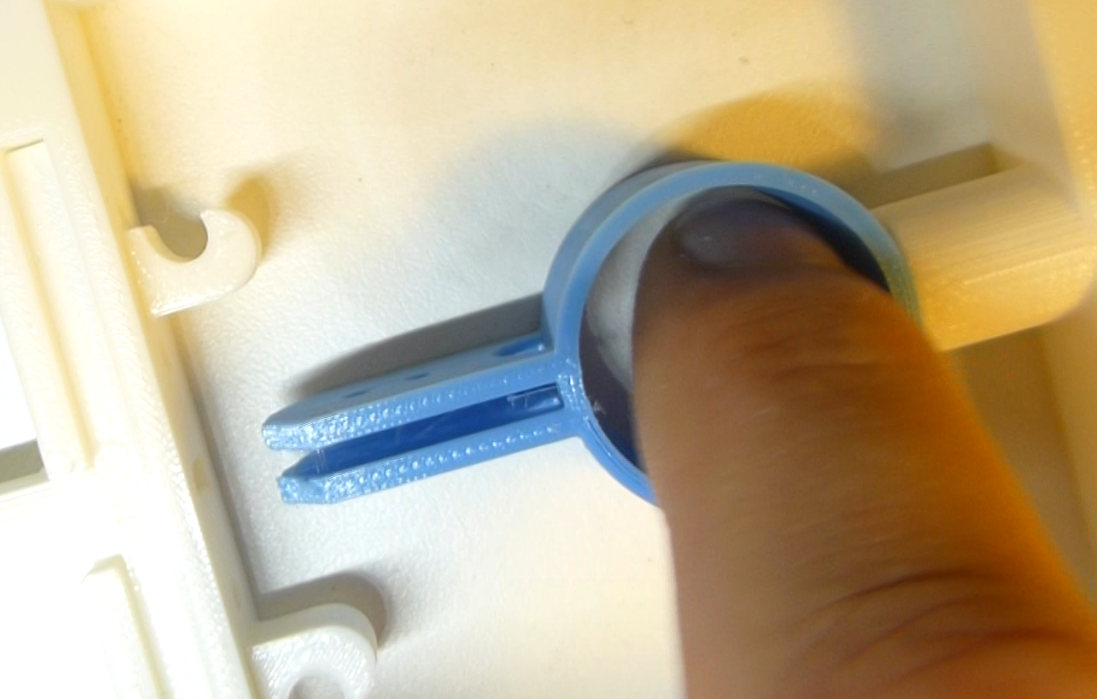
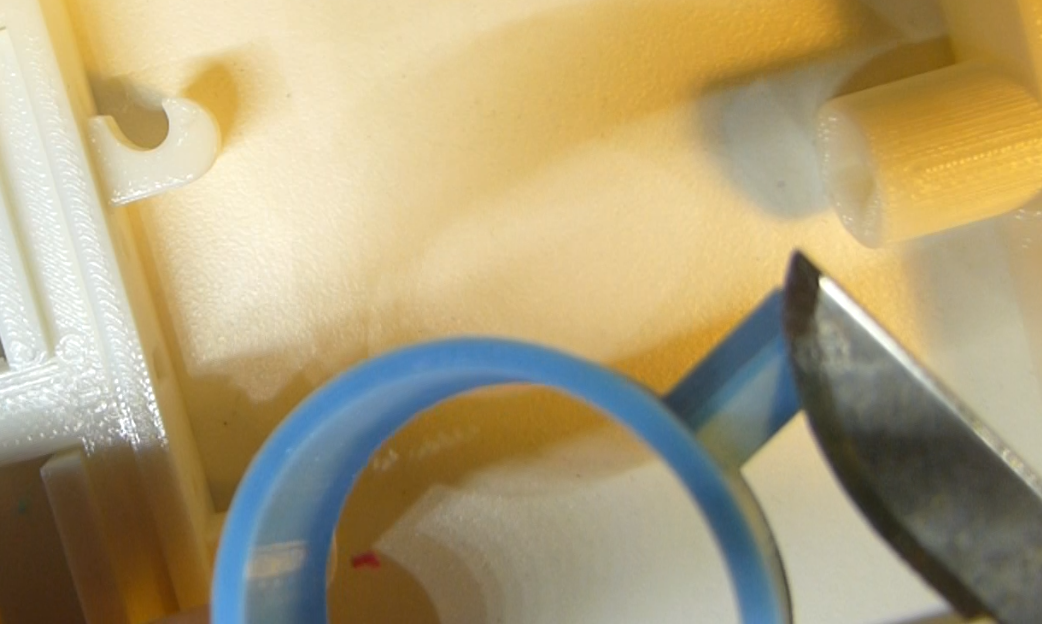
The "simple_plate" which is the Domino-pickupTool_simple_plate.stl and is actually the pull lever and it gets inserted into the handle.
PREPARE THE "simple_plate". Remove any support material from the diamond. Be sure to trim any bonded layer from the support material from the bottom of the diamond. You may have to slightly trim this a smoother movement.
Put the handle on a flat surface. Hold the "simple_plate" at an angle and insert the diamond into the hole. You can put a slight bot of lubricant on the plastic diamond to help avoid binding. I use "Super Lube" PTFE grease, but you can use something like vasoline. It only takes a thin thin amount.
Inspect the "Domino-pickupTool_216mm_pushrod.stl." It should be even with no elephants foot. Inspect the holes, make sure there is no print debris on the shaft.
Observe the shaft is flat on one side and rounded on the other (the top of the print).
INSERT the "Domino-pickupTool_216mm_pushrod.stl" into the shaft end with the rounded edge facing the OUT on the shaft. It should reside between the tongs on the "simple_plate." The pushrod should move freely in and out.
Align the pushrod holes with the "simple_plate" holes and insert some Filament Rivets. Before closing the rivets ensure you have free movement of the entire assembly up and down. Trim any binding ever so slightly until smooth if required.
Install the Rubberband
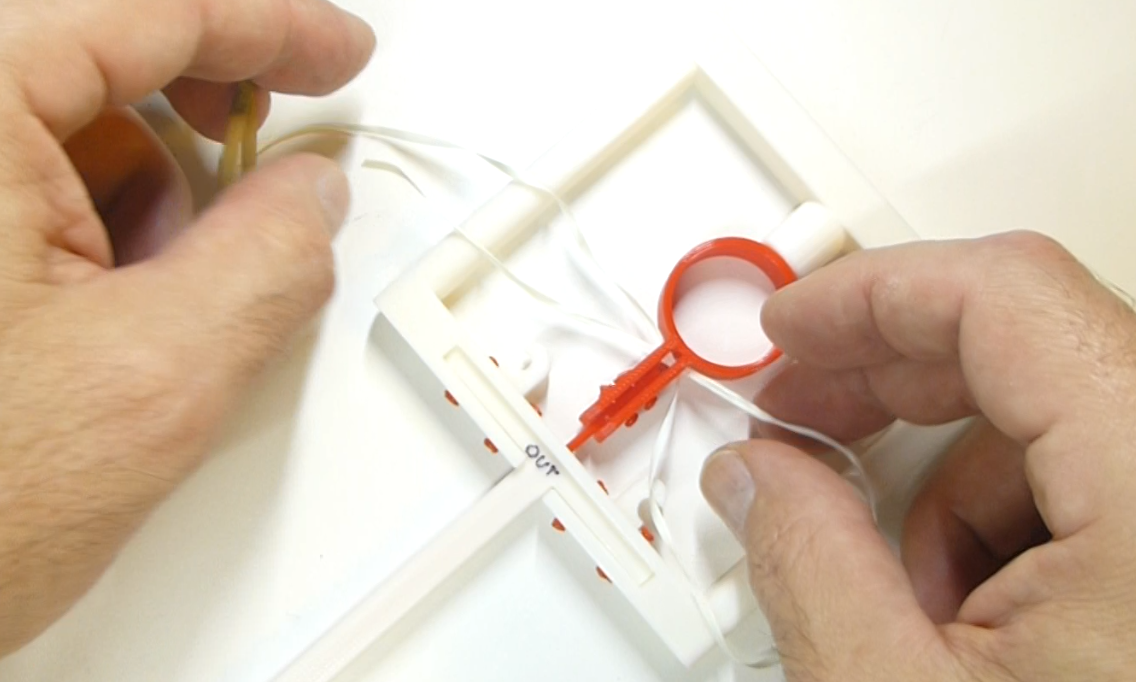
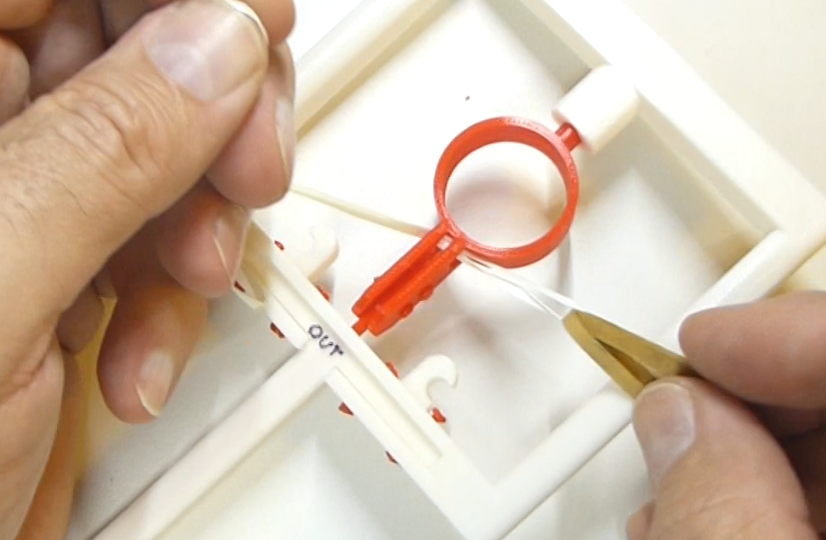
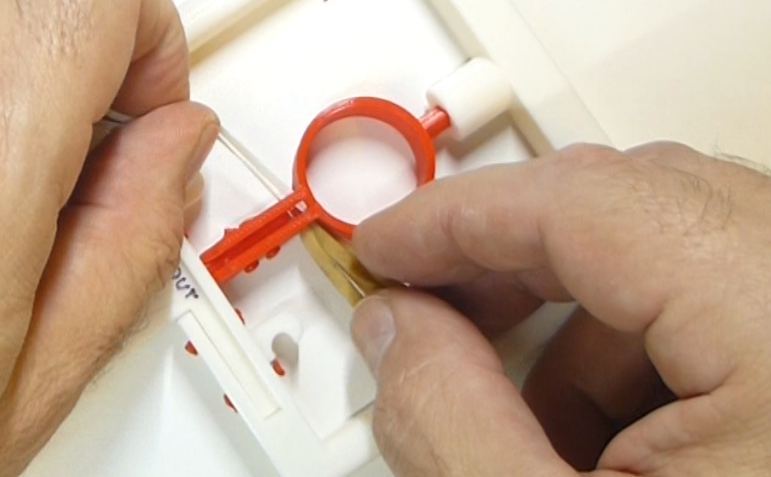
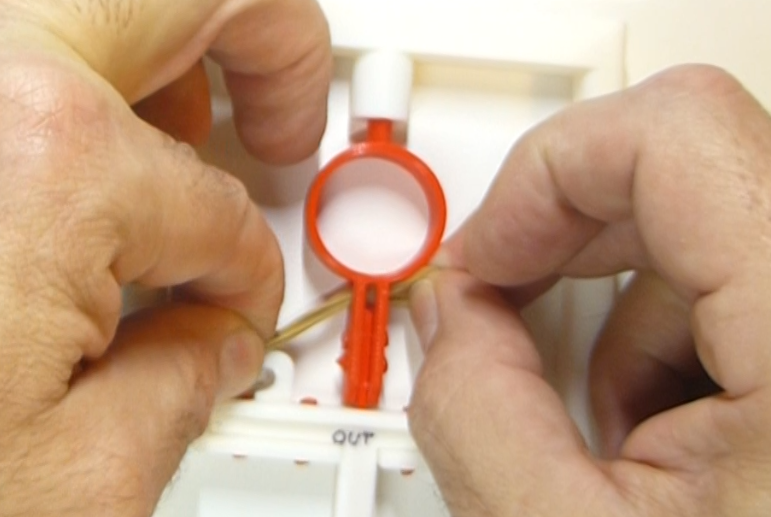
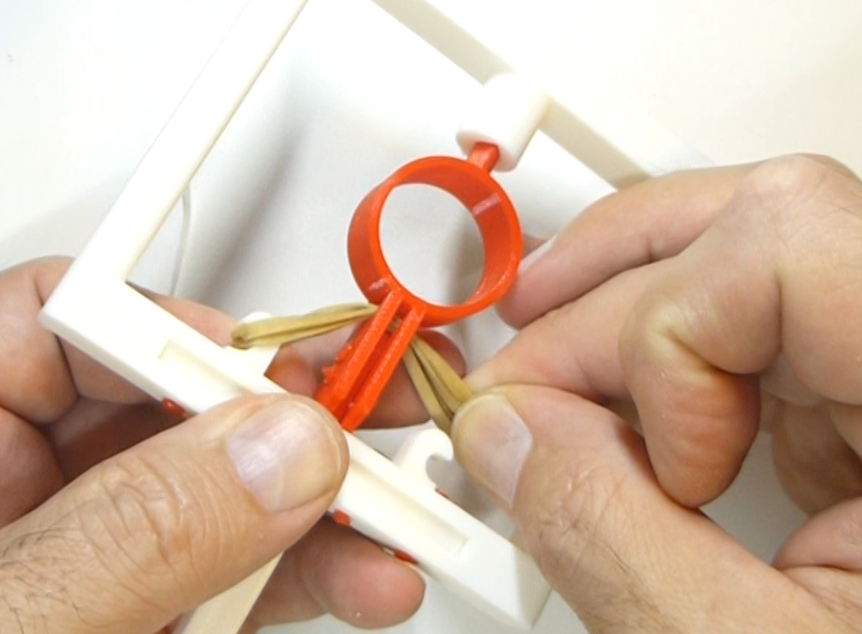
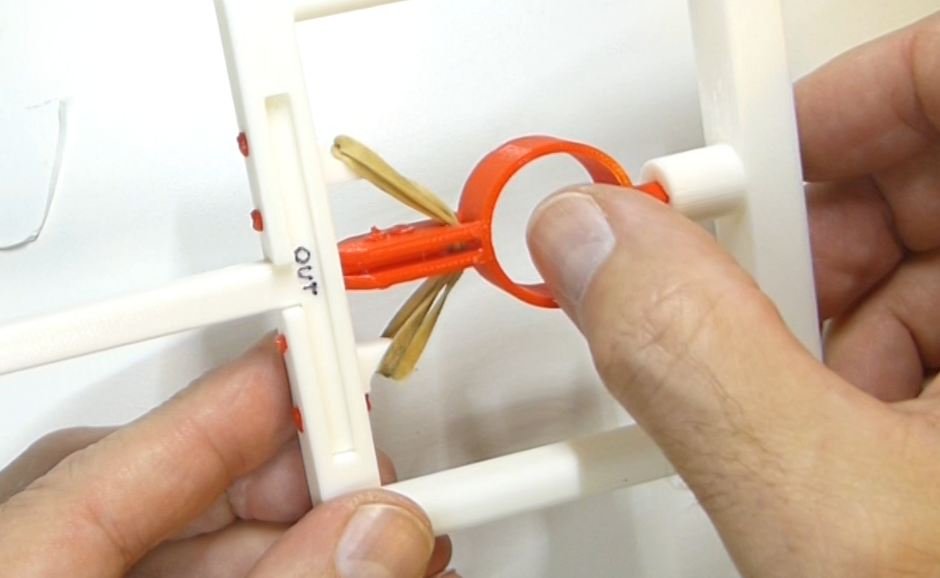
If you are using a folded rubberband:
- Insert both ends of the pull line through the hole at the base of the "simple plate"
- Fold the rubberband and insert it through the loop of the pull line
If you are using an unfolded rubberband
- Insert the pull line through the rubberband and insert both ends of the rubberband through the hole at the base of the "simple plate"
Attached the rubberband
- Pull the rubberband through the hole.
- Latch the rubberband around the first hook
- Stretch the rubberband around the handle second hook
- Test the movement of the pushrod.
Test Your Tool
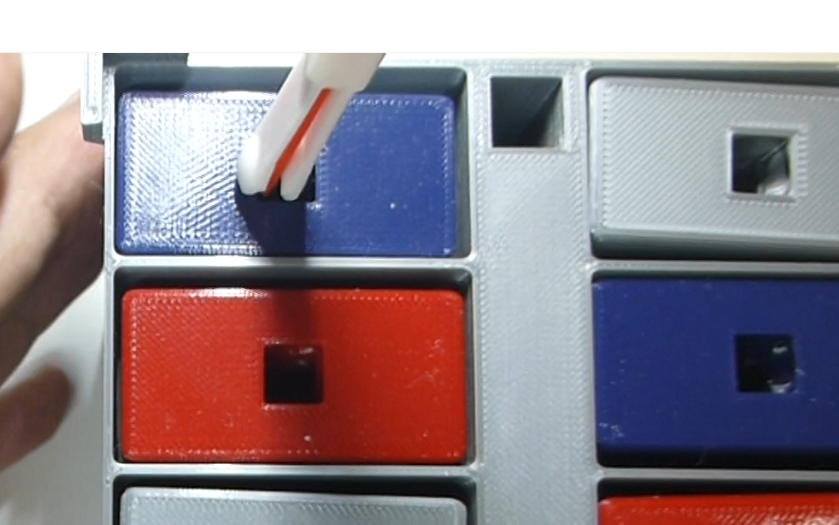
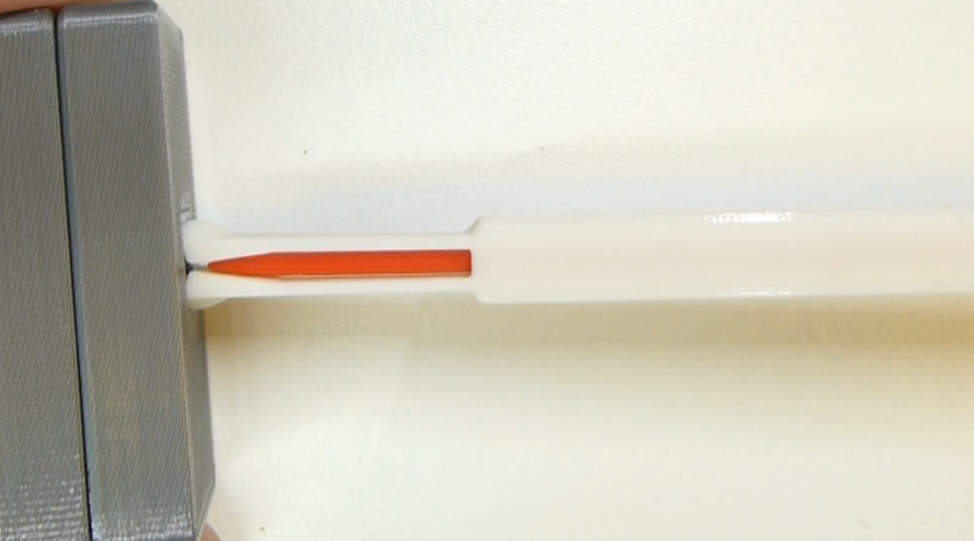
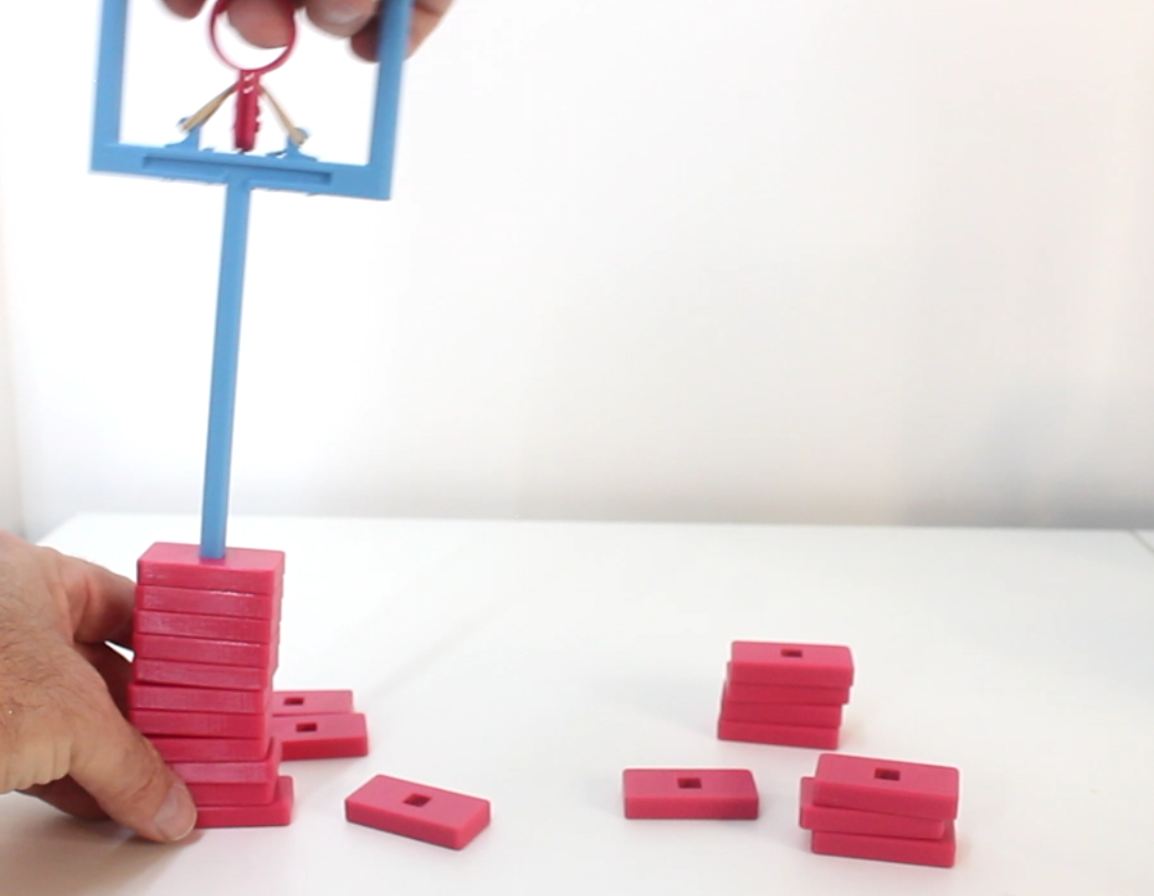
Inspect the Shaft print
The shaft printed flat on the plat on the side opposite the side labelled OUT. The edges of the shaft are all cut at a 45% angle. Make sure there is no elephants foot or lingering support material. Trim as needed. It should match the quality of the edges on the top of the print.
Try it out.
- Depress the button by pulling it upward.
- Insert it into a domino hole and release the button.
- The domino should stay on the end.
I find it is faster to loose stack some dominos, then insert the tool down the center while roughly aligning the holes to the tool can engage. The tool will drop down through the dominos as you do that.